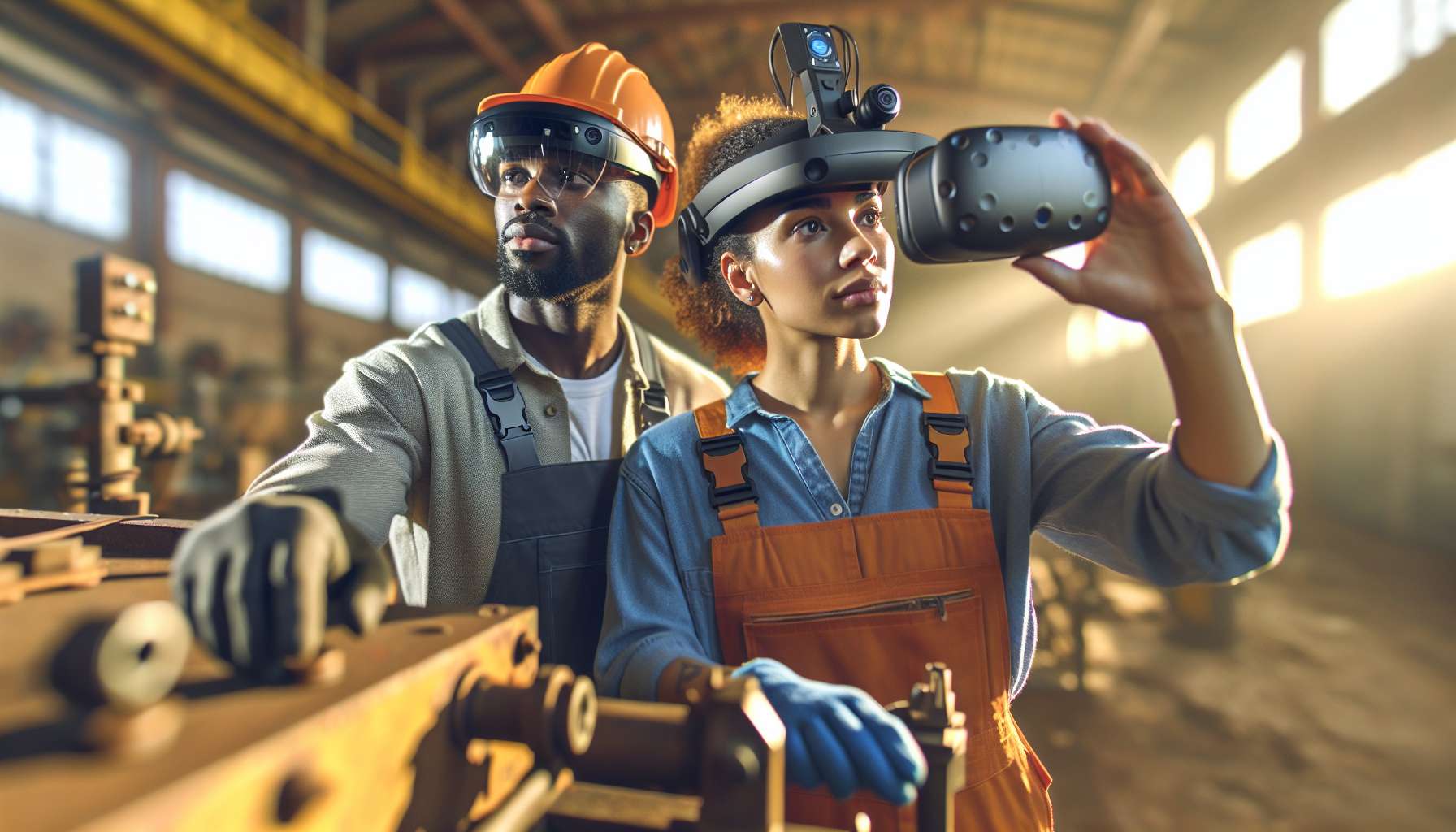The Synergy of AR and IoT in Revolutionizing Industrial Operations
Imagine a world where machines communicate with each other seamlessly, providing real-time data and insights to enhance productivity and efficiency. This is the future that is being shaped by the convergence of Augmented Reality (AR) and the Internet of Things (IoT). In this article, we will explore how AR and IoT are revolutionizing industrial operations and paving the way for a new era of smart manufacturing.
What is Augmented Reality (AR) and the Internet of Things (IoT)?
Before we delve into the synergy between AR and IoT, let’s briefly understand what these technologies entail.
Augmented Reality (AR) is a technology that overlays digital information, such as images, videos, or 3D models, onto the real world. By using AR devices, such as smart glasses or mobile applications, users can interact with virtual objects in their physical environment.
The Internet of Things (IoT), on the other hand, refers to the network of interconnected devices that can collect and exchange data. These devices, equipped with sensors and actuators, can communicate with each other and with the cloud, enabling the seamless flow of information.
The Power of Synergy
When AR and IoT come together, they create a powerful synergy that has the potential to transform industrial operations. Let’s explore some key areas where this synergy is making a significant impact:
Remote Assistance and Training
AR enables remote experts to provide real-time guidance and support to on-site technicians. By wearing AR glasses, technicians can receive step-by-step instructions, overlaying relevant information onto their field of view. This not only reduces the need for physical presence but also enhances training and knowledge transfer, leading to improved efficiency and reduced downtime.
Asset Management and Maintenance
IoT sensors embedded in industrial equipment can collect data on performance, temperature, and other crucial parameters. AR can then visualize this data in real-time, allowing operators to monitor the health of assets and identify potential issues before they escalate. Predictive maintenance becomes a reality, minimizing unplanned downtime and optimizing maintenance schedules.
Quality Control and Inspection
AR can enhance the accuracy and speed of quality control processes. By overlaying digital models onto physical objects, inspectors can compare specifications, identify defects, and perform measurements with precision. This not only improves the overall quality of products but also reduces inspection time and costs.
Workplace Safety and Training
AR can play a crucial role in enhancing workplace safety by providing real-time hazard warnings and instructions. Workers can visualize potential risks and receive guidance on safety protocols, reducing accidents and injuries. Additionally, AR can be used for immersive training simulations, allowing employees to practice complex tasks in a safe virtual environment.
Real-World Examples
The potential of AR and IoT in industrial operations is not just theoretical. Several companies have already embraced these technologies and are reaping the benefits:
- General Electric (GE) utilizes AR to assist technicians in complex assembly tasks, reducing errors and improving productivity.
- Siemens has implemented IoT-enabled asset management systems, combining real-time data with AR visualization for efficient maintenance.
- Boeing uses AR to guide workers through complex wiring processes, reducing training time and improving accuracy.
The Future Outlook
The synergy between AR and IoT is still in its early stages, but the potential for growth and innovation is immense. As technology continues to advance, we can expect to see even more sophisticated applications in industrial operations. From smart factories to connected supply chains, the future is bright for those who embrace this transformative combination.
In conclusion, the convergence of AR and IoT is revolutionizing industrial operations by enhancing remote assistance, asset management, quality control, and workplace safety. Real-world examples demonstrate the tangible benefits of these technologies. As we look ahead, the future holds endless possibilities for those who harness the power of AR and IoT in their business operations. The time to embrace this transformative synergy is now.





